Summitting a +5000 giant is on your bucket list? Iran is home to such a giant! And here’s all you need to know before going for it! Known as the roof of Iran, Mount Damavand is Iran’s highest mountain and Asia’s highest volcano. It is a potentially active volcano with sulfur springs and hot springs on its southeast face. Located in the southernmost part of Mazandaran Province, this top trekking destination in Iran is visible from Tehran, Varamin, Qom and the shores of the Caspian Sea. You can summit it from 4 faces: the south face, the north face, the northeast face, and the west face.
Contents
- 1 What’s So Special about Mount Damavand?
- 2 Mount Damavand Main Summit Routes
- 3 Which Route to Take?
- 4 Mount Damavand Camps
- 5 Physical Fitness Required for Summitting Mount Damavand
- 6 What to Take to Mount Damavand
- 7 When to Summit Mount Damavand?
- 8 Attractions Near Mount Damavand
- 9 Like to go on an Adventure on Mount Damavand?
What’s So Special about Mount Damavand?
In spring and summer, the foot of Mount Damavand is carpeted with red poppies and herbal plants. With a 5610-meter altitude, Damavand mountain looks like a tall bride with a white veil over her head and a carpet of red poppies under her feet.

Mount Damavand is one of Iran’s national symbols. From ancient times, the mountain has had a sacred status among Iranians and it has been named in many Persian myths and legends. One of the mountain’s legendary stories is in Ferdowsi’s book of epic poems, Shahnameh. In the story, the hero Fereydoun, imprisons Zahhak (the evil king with snakes on his shoulders) in Damavand Mountain. The legend also says that his captivity will continue until the end of the world. Some of the locals who live near the mountain still believe the strange sounds coming from the mountain are the moans of Zahhak. Also, the mountain has always been the symbol of resistance in Persian poetry.

Mount Damavand Main Summit Routes
There are different routes for summitting Mount Damavand. The most well-known of them are:
1.The South Face
The south route is the busiest and the most popular route for summitting mount Damavand. From the southeast part of the mountain, Polour, Rineh, Gusfandsara and Bargah-e Sevvom are on this route. The hiking route starts from a place called Dorahi. At this place, the asphalted road that stretches from Polour and Rineh ends and the dirt road that leads to the mosque begins. After passing the mosque and Gusfandsara, the route leads you to Bargah-e Sevvom. Then, after passing the south face and the frozen waterfall, it takes you to the Sulfur hill and finally to the summit. There is no need for scrambling and because the path has been highly populated, it is easily distinguishable. To find out everything about the southern face route, read Southern Face Summit Guide.
2.The Northeast Face
The northeast route is relatively longer than the other routes and it is very scenic. This route starts from Haji Della Village in the north of the summit. After passing Gusfandsara and the grassland, the route leads you to Takht-e Fereydoun hut. After the hut, it joins the traverse of Aroosakha Glacier, leads to the northern face and finally reaches the summit. Because of the existence of a special path (sloping with small rocks), the descent is usually done from Esteleh Sar region and Gazaneh Village.

3.The North Face
The summit route on this face passes between Siouleh Glacier (right) and Dobi Sel Glacier (left). The northern route begins from the large rock on the southwest of Nandel Village. This route has 2 huts: one at a 4000-meter altitude, and the other at a 4700-meter altitude (known as the 5000-meter hut). Early on the route, there is Nandel Plain and the path before and after the 5000-meter hut requires scrambling. Except for at Gusfandsara, you can find no potable water source in the northern face. Also, the steep slope at the end of the route makes climbing and carrying your backpack harder.

4.The West Face
This route starts from a parking lot (3400m) and reaches Simorgh shelter after about 3 hours of hiking. Continuing this path on the western face then leads you to the summit. There is potable water at Simorgh shelter and the slope at the end of Damawand’s western route is rather steep.

Which Route to Take?
The South Face Route is the easiest and the North face route is the hardest among these routes. The northern, southern and northeastern routes are near villages and they all include huts on the way. The South face route is one of the oldest routes for summitting Damavand Mountian. Also, it is the easiest route for summitting the mountain and the most accessible through Polour and Rineh villages. On the route, there are shelters that include WCs, camping areas, and places for mountaineers to rest. There is also a waterfall that’s frozen throughout the year and only flows in very hot summers. With a 5100-meter altitude, this waterfall is the highest (by altitude) in the Middle East.
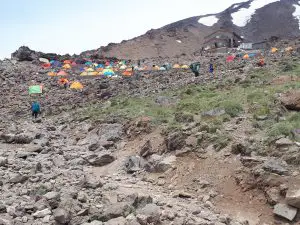
Mount Damavand Camps
Up to now, except for the camps at the nearby villages, 7 huts and shelters have been built on the main summit routes of Mount Damavand:
- Mountain Shelters in the Nearby Villages: At the shelters at Polour (western face) and Rineh (southern face), you can spend the night, get yourself a mountain guide and find off-road cars that can take you to the starting point of the ascent.
- Sahebazzaman Mosque: It is a mountain hut built in 1992. It is at a 3000-meter altitude on the South face.
- Bargah-e Sevvom Hut (the old): Built in 1967 at a 4200-meter altitude. An avalanche in 1973 destroyed this hut. So, it was replaced with a stone structure a year later. There is also a camping area around it.
- Bargah-e Sevvom Shelter (the new): Built in 2009, 50 meters higher than the old Bargh-e Sevvom Hut (on the south face). This shelter includes first aid room, backpack storage, public storage, dining room, kitchen, public bedroom, private bedroom, and public restrooms.
- Simorgh Shelter: Built in 1995 at a 4200-meter altitude on Damavand’s western face.
- Takht-e Fereydoun Hut: Built in 1976 at a 4400-meter altitude on the northeast face.
- The 4000 Felezi Hut: Built in 1981 at a 4000-meter altitude on the north face.
- The 5000 Felezi Hut: Also known as the 5000 hut, it is at a 4630-meter altitude on the north face.
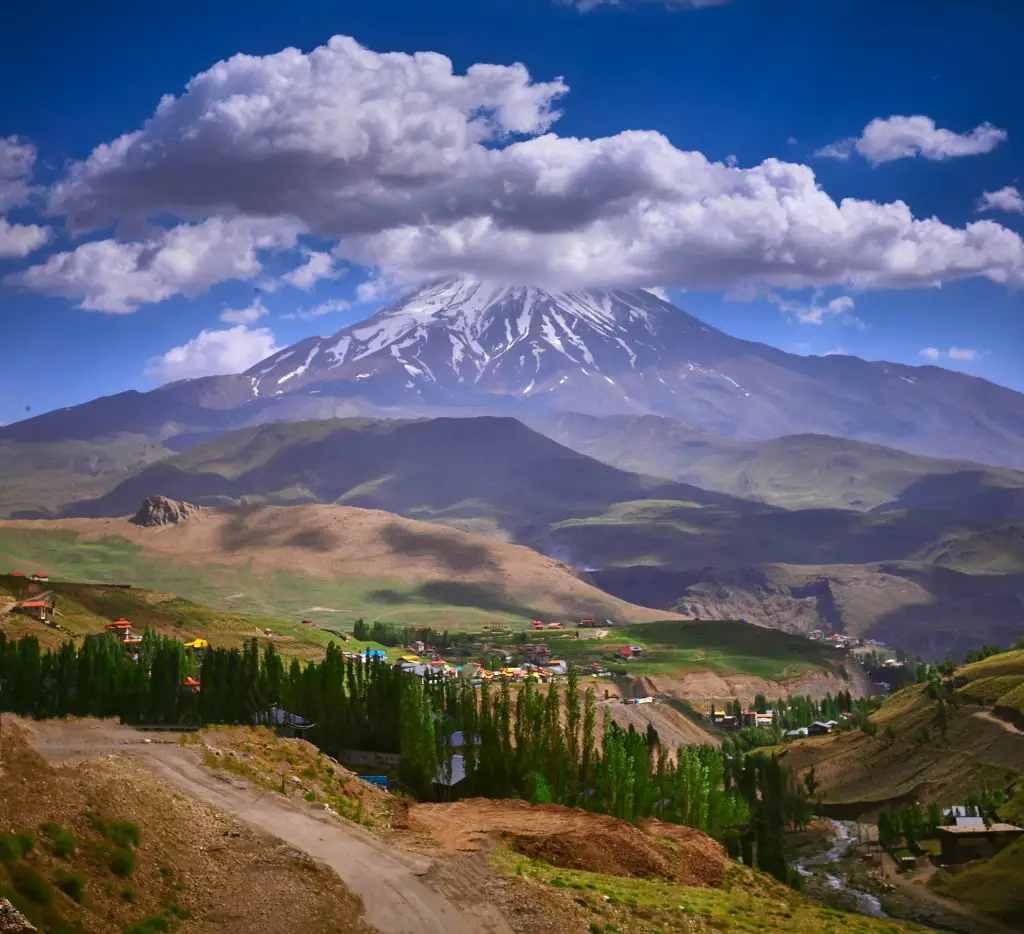
Physical Fitness Required for Summitting Mount Damavand
If you dream of summitting Iran’s highest peak, start working out right now. One of the prerequisites for summitting it is physical fitness and strong legs. So, start exercising seriously and make mountaineering a habit. Also, you definitely need to have an acclimatization prior to your Damavand ascent so that you get your body ready for the 5670m altitude. You can start with peaks below 4000m. The week before summitting Damavand, summit high peaks like Sabalan, Alam Kuh, Sialan or Zard Kuh to get your body used to low pressure and oxygen. To learn more about exercises suitable for mountaineering, do more Isometric exercises.
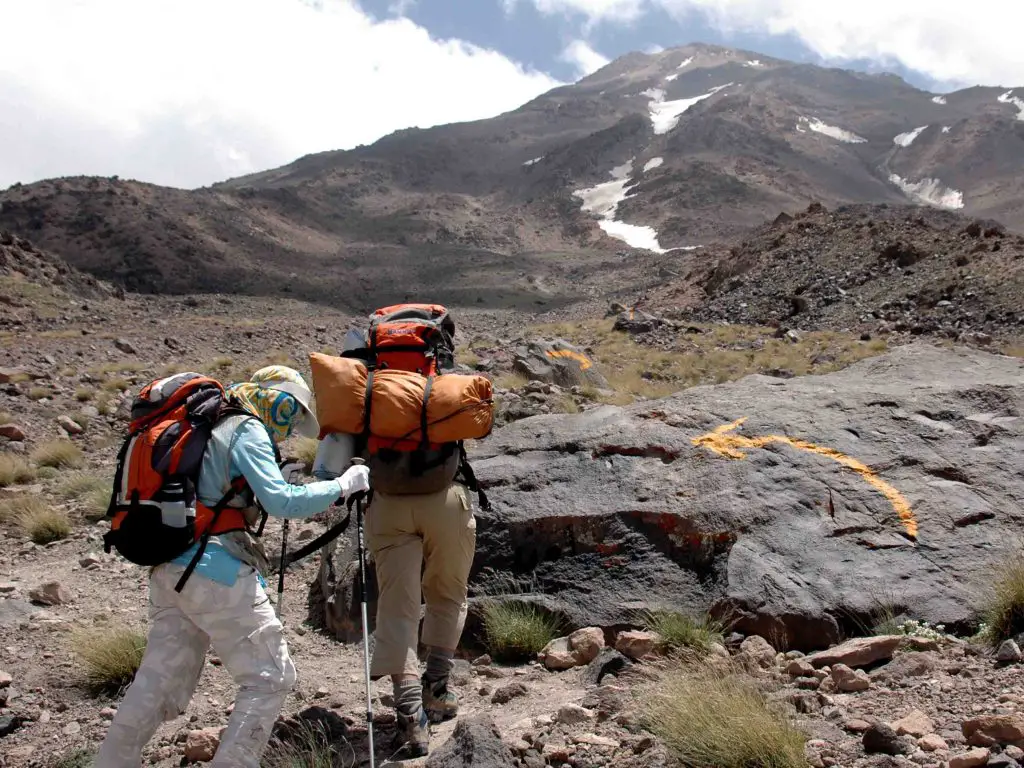
What to Take to Mount Damavand
Summitting Mount Damavand should always be done beside a professional mountaineering group and solo climbing is absolutely dangerous. When you join a mountaineering group, the leader lets you know what the essential supplies are. But generally, you need a multi-day backpack and a small daypack. You will leave the multi-day backpack at the camp and summit the mountain with the daypack. For Damavand summer ascent, base layer clothing, polar clothing, down jacket, gloves, mountaineering pants, wool socks, gaiters and a pair of batons are necessary.

One way to avoid mountain sickness is drinking a lot of water. Carrying a bottle of water or an empty bottle is also a necessity. Make a thick mixture of lemon, honey and hot water, and carry it in a small bottle. You can then add a little bit of it to your drinking water and drink it as a nourishing and healthy drink. Having nuts and natural sweets with you is an essential requirement for the ascent. To protect yourself from the sulfur gasses and the summit winds, taking a few scarves and a helmetclava is recommended. Headlamp, mountaineering sunglasses and sunscreen are of the other essentials. To be more environment friendly, bring along a few garbage bags too.
When to Summit Mount Damavand?
The best time to summit Mount Damawand is June to August. Summitting the mountain in other seasons will be very difficult and dangerous.
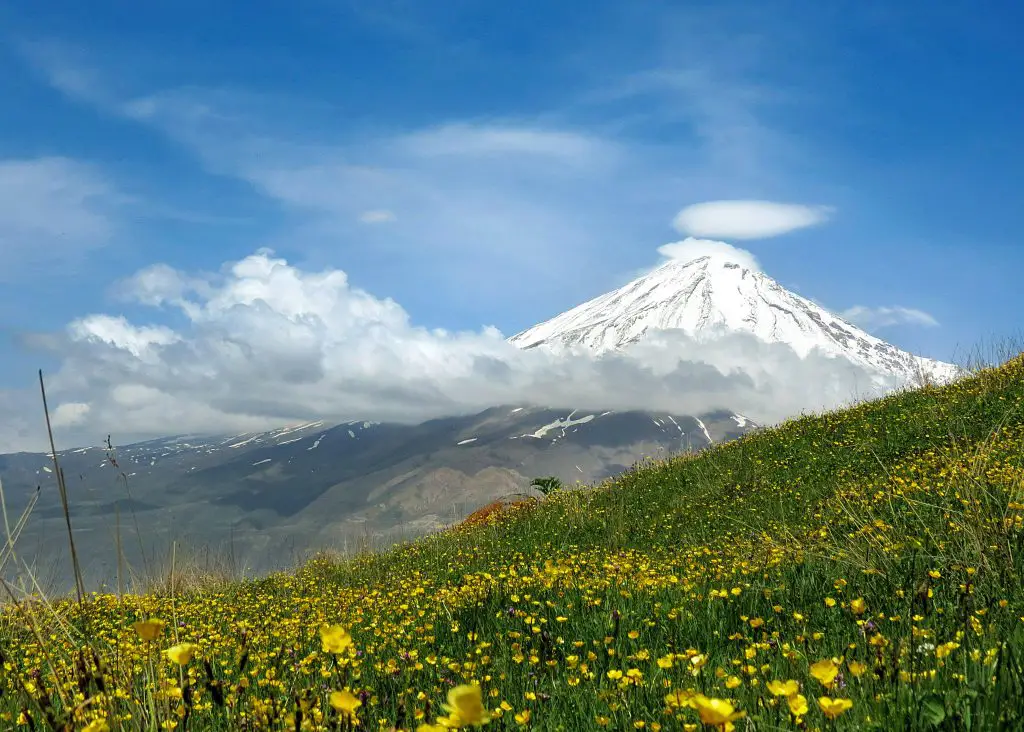
Attractions Near Mount Damavand
-
Hot Springs
Larijan Hot Springs are on Haraz-Amol road, near Tehran. For enjoying these therapeutic springs, you have to go to the beautiful Rineh Village. You can relax your body in a 60-70° water temperature and enjoy the rural beauties of Rineh. There are a lot of minerals in the springs of this region. Ab Ahan Spring and Shah Abbasi Bathhouse are of the most popular hot spring centers in the village. There are many rental houses and suits that are equipped with sulfuric hot pools.

-
Lar National Park
Lar national Park is probably the most beautiful and the most visited attraction near Damavand Mountain. As a protected area and a no hunting zone, the park is home to a rich diversity of wildlife. It includes a large dam that provides a part of Tehran’s water supply. Nomads are the main hosts at Lar National Park. To find this park, you need to take Haraz road until you reach Polour. Take a left after Polour and get to Lar National Park after a 20 km-drive.

-
Waterfalls
Don’t miss checking out the lovely waterfalls of the region when you go to Mount Damavand. Ayeneh Roud Waterfall is 1 km to the east of Damavand City. Together with the large river that’s attached to it, the 20-meter waterfall is a local attraction. It is in the middle of a rock strait and a green field. To see this waterfall, go to Lar National Park. If you intend to summit Mount Damavand through the western face, you’ll inevitably see it.
Jangalak Waterfall is the other beauty you can see near Damavand. Surrounded with the willow jungles in the east of Damawand Mountain, this waterfall looks like a piece of heaven. You can find it 7 km to the east of Damavand City.
Like to go on an Adventure on Mount Damavand?
Then join our 4-day Mount Damavand-South Face tour, our 5-day Mount Damavand tour, our 9-day Alam and Damavand tour, our 8-day Sabalan and Damavand tour, our 7-day Sialan and Damavand tour, our 12-day Zard Kuh and Damavand tour, or our Mount Damavand and Raghez Canyon tour.











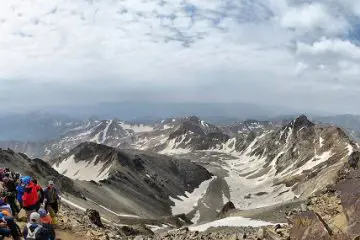






Comments